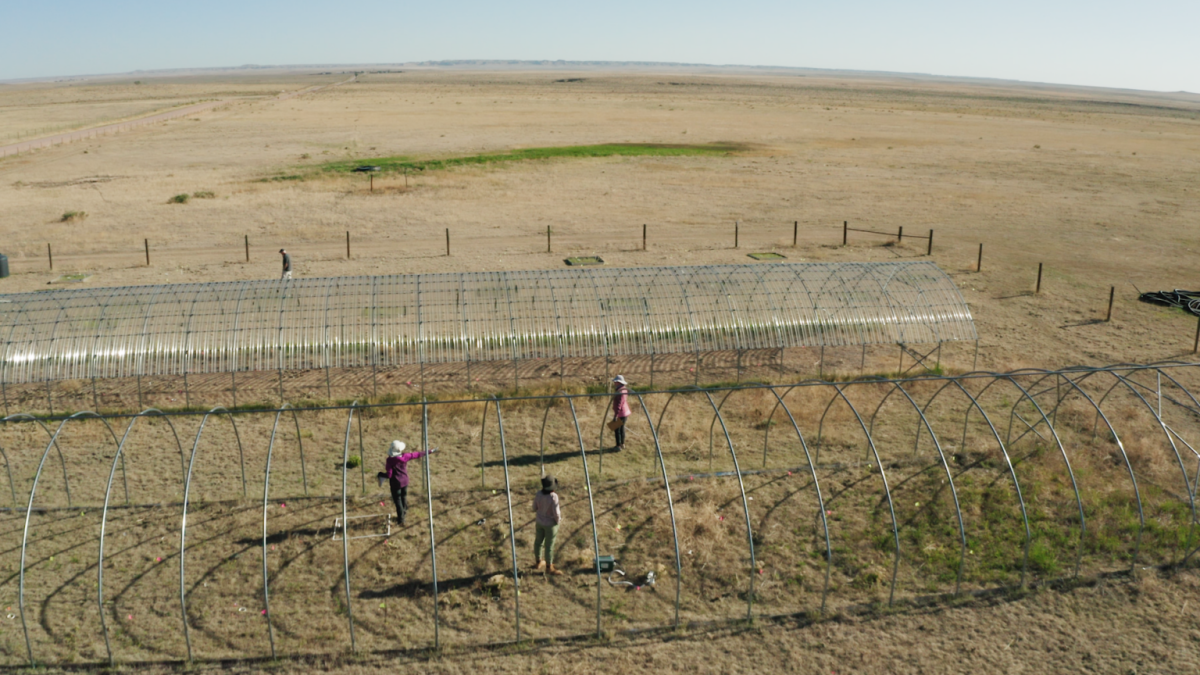(Resource News International) — Poor weather heading into the fall, the lack of snow cover over the winter and a general dismal spring have resulted in Ontario’s wheat output coming in lower than anticipated, according to an official with the Ontario government.
“Right now, an estimated 98 per cent of the province’s winter wheat crop has been harvested and based on only about 30 per cent of the yield data reported to date, we’re looking at an average yield of about 76.3 bushels an acre,” said Peter Johnson, a cereals specialist for the Ontario Ministry of Agriculture, Food and Rural Affairs at Stratford.
Read Also

Prolonged drought causes unprecedented productivity loss: Study
Colorado State University — Extreme, prolonged drought conditions in grasslands and shrublands would greatly limit the long-term health of crucial…
As more yield data is reported, he said, that number will change, albeit to the downside.
“We will likely end up with an average winter wheat yield of roughly 75 bushels an acre as the numbers have a tendency to trend down,” Johnson said.
This compares with the trend line average yield for winter wheat in Ontario of 79.6 bushels an acre and the 2008 yield average of 81.5 bushels per acre.
“The 2009 yield average is about five per cent lower than the trend line, but it’s about five per cent better than we had anticipated in May,” Johnson said. “The winter wheat crop had looked pretty ugly in May because of the tough fall, winter and spring.”
Weather for the development of the crop in the fall was extremely poor, he said. There had been adequate snow cover for a portion of the winter, but an early melt left the crop vulnerable to tremendously cold temperatures and, in turn, lots of frost heave.
“In the spring we were looking at reduced stands and a winter wheat crop that in general was not very vigorous,” Johnson said. “Combine that with a late spring, and we thought the crop was in big trouble.”
Winter wheat production in Ontario was pegged at roughly 61.875 million bushels, which would compare with the previous year’s harvest of 101.875 million bushels.
“Reasonable shape”
Based on early indications, the bulk of the winter wheat crop that was just harvested will grade No. 2, Johnson said.
“From a quality standpoint, we are in reasonable shape,” he said. “It certainly is not an awesome crop by any stretch of the imagination.”
Test weights were very good, he said, but added that there was some fusarium damage.
Some of the crop will downgrade to a No. 3, feed or sample, because of fusarium, he said.
Producers in Ontario seeded roughly 950,000 acres to winter wheat in the fall of 2008, Johnson said. Of that, 11 per cent suffered winterkill, leaving an estimated 825,000 acres that made it through to the harvest.
Johnson said some of the trade believes that 825,000 acres may be on the high side, while others feel the area was actually above that level.
In the fall of 2007, Ontario’s producers seeded a record 1.25 million acres to winter wheat.
“If we were to have a perfect fall, there are hopes the area seeded to winter wheat will hit the one million-acre level in 2009,” Johnson said.
However, because the area seeded to winter wheat depends on the harvest of the Ontario soybean crop, and development of that crop is running significantly behind, a more realistic seeded area base might be in the 800,000-acre or slightly lower range, Johnson said.
The crop insurance deadline for seeding winter wheat in Ontario is Oct. 31.
That said, “on any given year, however, producers seed an average of 50,000 to 60,000 acres of winter wheat during the first week of November,” Johnson said.















